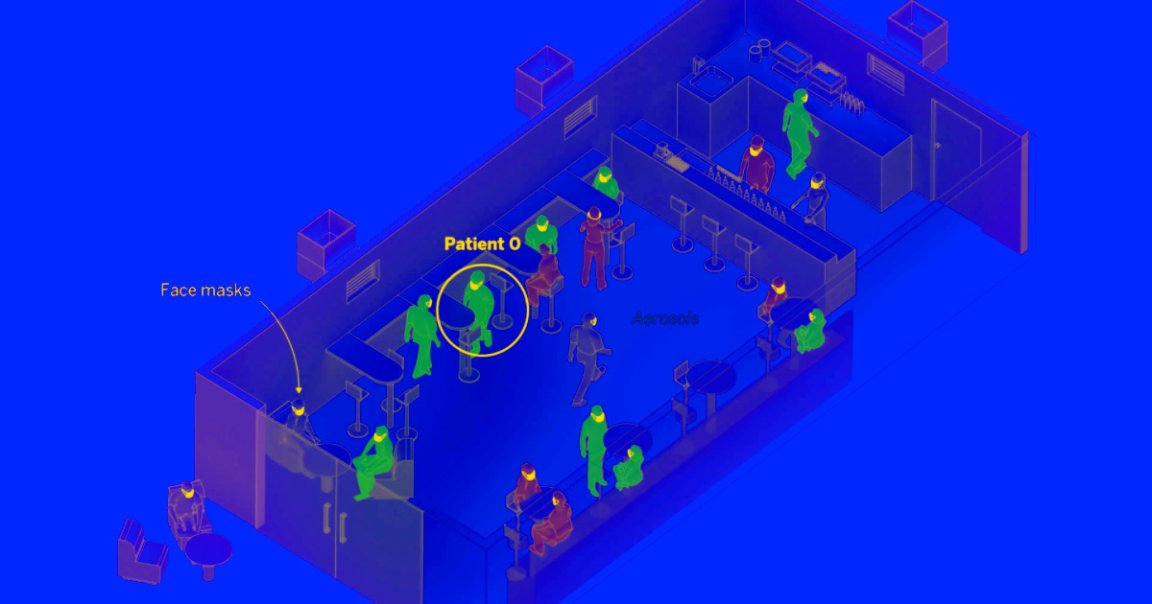
It should probably be common knowledge by now that socializing, taking classes in person, or doing anything else indoors comes with the risk of COVID-19 transmission — especially without taking precautions like wearing a mask.
A new series of visualizations by the Madrid-based publication El País show the likelihood of spreading COVID-19 in three indoor settings: hanging out in a home, going to a reduced-capacity bar, or sitting in a classroom. All three scenarios have dire outcomes, but the visualizations — based on research at the University of Colorado — also show how wearing masks and improving ventilation can protect most, but not all, of the people present.
All three scenarios are based on the same premise: A bunch of people are in a room, and one of them is infectious with the coronavirus. Take, for example, the bar. Without masks, the infected patron will likely spread COVID-19 to 14 out of 15 other customers and two of the three bartenders after just four hours. With masks, only around eight customers and one bartender catch the coronavirus. But add ventilation into the mix and just one other customer, the one nearest the sick person, ends up catching the virus that day.
The key issue with indoor spaces, in other words, is that aerosols linger and grow more concentrated, contaminating the air of the room until they’re blown away by a breeze or fan.
Honestly, just check it out — it’s an accessible estimate of the risks associated with various permutations of social situations that may tempt you as the colder months drag on.